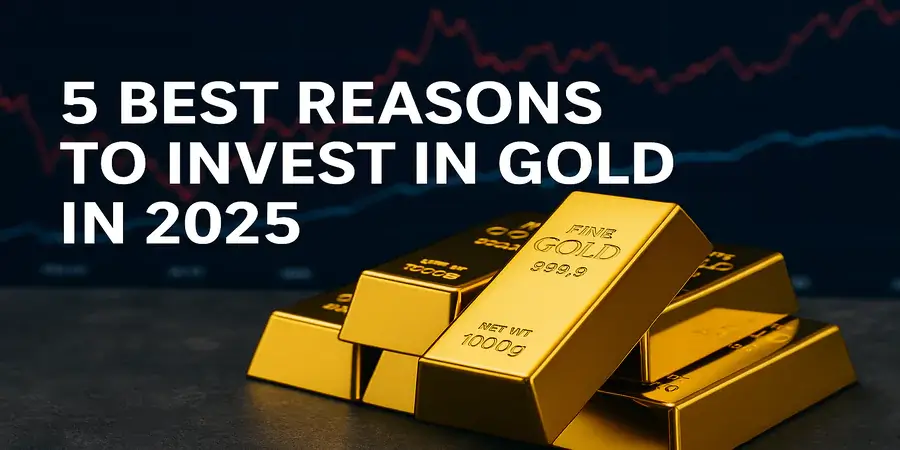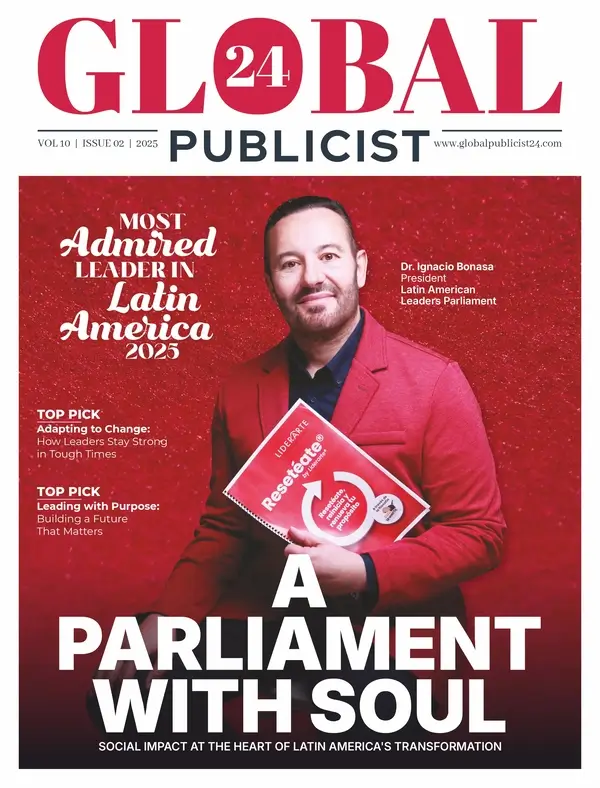Gold prices surged to record highs above $2,900 per troy ounce in early 2025, continuing a rally that saw the precious metal gain 27% in 2024 according to World Gold Council data. This performance outpaced the S&P 500’s returns and marked gold’s strongest annual gain since 2010. Yet the drivers behind this rally differ from historical patterns traditional inverse correlations with real interest rates and the U.S. dollar have broken down, while central bank purchasing, geopolitical tensions, and shifting monetary policy expectations create a complex investment landscape. For investors considering gold allocation in 2025, understanding both the fundamental catalysts supporting prices and the inherent risks becomes essential. This analysis examines five evidence-based reasons supporting gold investment consideration, realistic return expectations, implementation options, and critical risk factors that every investor should evaluate before committing capital.
Understanding Gold’s 2024-2025 Performance Context
Before examining specific investment rationales, it’s essential to understand the unusual market dynamics driving recent gold performance. According to analysis from the World Gold Council, gold’s 2024 rally occurred despite factors that historically suppressed prices: elevated real interest rates (10-year Treasury Inflation-Protected Securities yielding 2.0-2.3%), a strong U.S. dollar (DXY index above 104), and reduced retail investment demand in key markets.
The primary driver has been unprecedented central bank gold purchases. Central banks added 1,037 tonnes to reserves in 2024, the second-highest annual total on record according to International Monetary Fund data. The People’s Bank of China, Reserve Bank of India, and central banks across emerging markets led this acquisition surge, reflecting strategic de-dollarization efforts and reserve diversification initiatives.
This shift matters because central bank demand exhibits different characteristics than retail or investment demand it’s strategic, price-insensitive, and sustained over multi-year periods. Goldman Sachs commodity strategist Jeff Currie notes: “Central bank buying has fundamentally altered gold market structure. These aren’t momentum traders exiting at first sign of trouble these are sovereign wealth managers executing decade-long strategic initiatives.”
Reason 1 – Inflation Hedge in an Uncertain Monetary Environment
Gold’s Historical Inflation Relationship
Gold’s reputation as an inflation hedge rests on decades of empirical evidence, though the relationship proves more nuanced than simple correlation suggests. Research from the Federal Reserve Bank of Chicago analyzing gold performance during 20th-century inflationary periods found that gold significantly outperformed other asset classes during sustained inflation (defined as 5+ year periods with average inflation above 5%).
However, gold’s inflation-hedging properties work differently than inflation-indexed bonds. Gold doesn’t track monthly CPI fluctuations instead, it responds to expectations of sustained currency debasement and loss of purchasing power confidence. The metal performs best when inflation combines with other economic stressors (currency crises, geopolitical instability, or central bank credibility concerns).
Current Inflation Dynamics and Monetary Policy
As of early 2025, U.S. inflation measured by Consumer Price Index stands at 2.8-3.0%, down from 2022’s 9.1% peak but still above the Federal Reserve’s 2% target. The trajectory remains uncertain due to several factors:
Fiscal Policy: Federal deficit spending approaching $2 trillion annually creates ongoing monetary expansion pressure. Economists at the Congressional Budget Office project deficit-to-GDP ratios reaching 6-7% through 2025, levels historically associated with inflation persistence.
Trade Policy: Tariff implementations on imports from major trading partners (China, European Union, Mexico) announced in late 2024 carry inflationary implications. The Peterson Institute for International Economics estimates broad-based tariffs could add 0.5-1.5 percentage points to inflation measurements through 2025-2026.
Energy Transition Costs: The shift from fossil fuels to renewable energy involves substantial infrastructure investment and temporary supply disruptions that economists expect will create commodity price volatility and inflation pressure through the transition period.
Gold historically anticipates inflation concerns rather than reacting to current measurements. The 2024 price rally began while inflation was declining, suggesting markets price in future inflation risk rather than current readings.
Reason 2 – Geopolitical Risk Premium
Quantifying Geopolitical Uncertainty
The past five years have witnessed an extraordinary accumulation of geopolitical risks: the Russia-Ukraine conflict, U.S.-China tensions over Taiwan and technology access, Middle East instability, and fragmenting international institutions. Political scientists at the Council on Foreign Relations categorize current geopolitical risk as the highest since the Cuban Missile Crisis.
Gold has historically commanded a “geopolitical risk premium” prices typically rise 8-15% during acute crisis periods according to analysis from Oxford Economics. Unlike equity markets that react negatively to uncertainty, gold benefits from its perception as a crisis hedge and store of value independent of any government or institution.
Specific 2025 Risk Factors
Several specific geopolitical concerns support continued gold demand:
U.S.-China Strategic Competition: The technological decoupling, trade tensions, and Taiwan contingency planning create ongoing uncertainty. A 2024 survey of sovereign wealth fund managers by State Street found 73% identified U.S.-China relations as their top geopolitical concern influencing asset allocation.
Middle East Instability: Ongoing conflicts affecting oil supply routes and regional stability historically drive gold demand from both investors seeking safety and regional wealth preservation (Middle Eastern buyers represent 15-20% of physical gold demand).
Election-Driven Policy Uncertainty: Major elections across 60+ countries in 2024-2025 (including U.S., India, Indonesia, Mexico) create policy uncertainty that typically supports gold prices during campaigns and transitions.
De-dollarization Trends: Efforts by BRICS nations to reduce dollar dependence in international trade settlement, evidenced by growing bilateral trade in local currencies and central bank reserve diversification, support structural gold demand.
Geopolitical strategist Ian Bremmer argues: “We’ve entered a period of sustained geopolitical fragmentation that won’t resolve quickly. This isn’t a discrete crisis to be managed it’s a structural shift toward a more multipolar, less stable international system. That environment inherently supports gold allocation.”
Reason 3 – Central Bank Demand Creating Structural Support
Unprecedented Official Sector Buying
Central bank gold purchases have fundamentally altered market dynamics. According to World Gold Council data, central banks have been net buyers every year since 2010, purchasing over 7,000 tonnes cumulatively. This represents approximately 12-15% of total gold demand annually enough to substantially impact prices.
The buying isn’t concentrated in a few countries. The IMF reports that 70+ central banks increased gold reserves since 2020, spanning emerging markets (China, India, Turkey, Poland) and developed economies (Singapore, Czech Republic). This broad-based demand reduces the risk of coordinated selling that could pressure prices.
Strategic Rationale Behind Official Purchases
Central banks cite several motivations for gold accumulation:
Reserve Diversification: Reducing concentration in dollar-denominated assets (currently 59% of global reserves according to IMF data) protects against U.S. policy decisions and dollar depreciation.
No Counterparty Risk: Gold represents value without dependence on any government, corporation, or financial institution meeting obligations particularly valuable during financial system stress.
Geopolitical Hedge: Physical gold held domestically can’t be frozen or sanctioned a consideration heightened after Western economies froze Russian foreign exchange reserves in 2022.
Inflation Protection: Gold reserves protect purchasing power better than low-yielding government bonds during inflationary periods.
This official sector demand exhibits price-insensitive characteristics central banks implement strategic multi-year programs rather than trading tactically on price movements. Oxford Economics projects central bank purchases of 850-1,000 tonnes annually through 2025-2027, providing substantial price support.
Reason 4 – Portfolio Diversification Benefits
Gold’s Correlation Profile
Modern portfolio theory emphasizes including assets with low or negative correlations to reduce overall portfolio volatility without sacrificing returns. Gold demonstrates valuable correlation characteristics according to analysis from Vanguard and BlackRock covering 40+ years of market data:
Equity Correlation: Gold shows near-zero or slightly negative correlation with U.S. equities over multi-decade periods. During equity bear markets (defined as 20%+ declines), gold has been positive 70% of the time, with average gains of 6% during equity downturns.
Bond Correlation: As interest rate volatility has increased, the traditional negative stock-bond correlation has weakened. Gold provides an alternative diversifier that doesn’t depend on interest rate movements.
Real Asset Exposure: Gold offers commodity exposure without the contango issues affecting crude oil futures or the business cycle sensitivity affecting industrial metals.
Optimal Portfolio Allocation
Academic research on gold’s portfolio role suggests modest allocations of 5-10% provide meaningful diversification benefits without excessive volatility drag. Analysis from the CFA Institute found that portfolios with 5% gold allocation reduced maximum drawdown by 1.5-2.5 percentage points during crisis periods while reducing overall volatility.
However, gold’s zero yield means higher allocations create opportunity cost during equity bull markets and stable economic periods, gold typically underperforms income-producing assets. Financial advisor Dave Ramsey recommends treating gold as “portfolio insurance” rather than a growth investment, with allocation sized to provide crisis protection without dominating returns.
The diversification benefit depends on holding gold through full market cycles rather than trading tactically. Investors who sold gold after 2011’s peak at $1,900 missed the 2024-2025 rally above $2,900 timing gold’s cyclical movements proves exceptionally difficult.
Reason 5 – Long-Term Store of Value and Currency Debasement Protection
Gold’s Multi-Decade Purchasing Power Preservation
One of gold’s fundamental characteristics is long-term purchasing power maintenance despite short to medium-term volatility. Analysis from the London Bullion Market Association comparing gold’s value over centuries shows remarkable stability when measured against real goods and services.
Historical data reveals that one ounce of gold could purchase a high-quality toga in ancient Rome, a fine suit in Shakespearean England, or a premium suit today approximately equivalent purchasing power across 2,000 years. Meanwhile, every fiat currency in history has eventually lost most or all value through inflation, currency reform, or political collapse.
Currency Debasement in the Modern Era
Contemporary currency debasement doesn’t typically manifest as Weimar-style hyperinflation in developed economies. Instead, it occurs through:
Monetary Expansion: The M2 money supply in the United States increased from $8 trillion in 2010 to over $21 trillion in 2024 a 162% increase while gold supply grew approximately 20% over the same period.
Negative Real Rates: When nominal interest rates fall below inflation rates, bond holders experience negative real returns effectively a wealth transfer from savers to borrowers (primarily governments). Gold offers an alternative that doesn’t carry this negative yield dynamic.
Debt Monetization: When governments issue debt that central banks purchase through quantitative easing programs, this represents indirect money printing that debases currency purchasing power.
Economist Jim Grant notes: “The Federal Reserve’s balance sheet expanded from $800 billion in 2008 to $8 trillion at peak a tenfold increase in 15 years. Anyone believing this monetary expansion doesn’t affect currency purchasing power misunderstands monetary history. Gold represents a hedge against this systematic debasement.”
How to Implement Gold Investment Strategies
Physical Gold Options
Gold Bullion: Purchasing physical gold bars or coins provides direct ownership without counterparty risk. Reputable dealers include APMEX, JM Bullion, and national mints. Expect to pay 3-8% premiums above spot price for retail purchases, plus storage and insurance costs.
Allocated Storage: Companies like BullionVault or Goldmoney offer allocated storage where you own specific bars stored in professional vaults. This provides physical gold benefits without home storage risks, though it introduces counterparty risk if the storage company fails.
Considerations: Physical gold involves transaction costs (buy-sell spreads of 3-5%), storage expenses ($100-500 annually for home safes or $100-300 annually for bank deposit boxes), and insurance. These costs create drag on returns unless held long-term.
Gold ETFs and Mutual Funds
Physical-Backed ETFs: SPDR Gold Shares (GLD) and iShares Gold Trust (IAU) hold physical gold and issue shares representing fractional ownership. These offer liquidity, low expense ratios (0.40% for GLD, 0.25% for IAU), and eliminate storage concerns.
Advantages: Easy to buy/sell through brokerage accounts, fractional share availability, IRA eligibility, and transparent holdings. No storage hassles or security concerns.
Disadvantages: Annual expense ratios reduce returns, shares don’t provide physical delivery options (in most cases), and potential tracking error during volatile markets.
Gold Mining Stocks
Major Producers: Companies like Newmont Corporation (NEM), Barrick Gold (GOLD), and Franco-Nevada (FNV) offer leveraged exposure to gold prices mining stocks typically amplify gold’s price movements by 2-3x.
Royalty/Streaming Companies: Franco-Nevada and Wheaton Precious Metals provide gold exposure with less operational risk by owning royalty streams rather than operating mines.
Risk Considerations: Mining stocks carry operational risks (accidents, strikes, permitting issues), management risk, geopolitical risk (many mines located in developing countries), and cost inflation that can squeeze margins. During gold bull markets, miners often underperform physical gold due to operational issues.
Gold Futures and Options
Futures Contracts: COMEX gold futures provide leveraged exposure with margin requirements of 5-10% of contract value. Professional traders use futures for tactical positioning, but retail investors face significant risks from leverage, margin calls, and contract rollover costs (contango).
Options Strategies: Call options on GLD or gold futures provide asymmetric payoff profiles limited downside risk with unlimited upside potential. However, options require sophisticated understanding of time decay, implied volatility, and strike price selection.
Warning: The CFTC reports that 70-80% of retail commodity futures traders lose money. Futures and options suit sophisticated investors comfortable with derivatives risk, not buy-and-hold investors seeking gold exposure.
Critical Risk Factors and Limitations
Risks Investors Must Consider
Opportunity Cost: Gold generates no yield, dividends, or cash flow. During extended periods of equity market strength (like the 2010s), gold significantly underperforms income-producing assets. The cost of gold “insurance” is foregone returns from alternative investments.
Volatility: Despite its safe-haven reputation, gold exhibits substantial volatility annual price swings of 20-30% aren’t unusual. Investors who purchased at 2011’s $1,900 peak waited until 2020 to break even. Short-term holders face significant timing risk.
Correlation Breakdown: Gold’s diversification benefits depend on historical correlation patterns that can change. During liquidation events (March 2020 COVID crash), gold fell 12% alongside equities as investors sold everything for cash.
Regulatory Risk: Governments have historically confiscated or restricted gold ownership during crises (U.S. Executive Order 6102 in 1933). While unlikely in developed economies today, this precedent exists.
Storage and Security: Physical gold requires secure storage, creating costs and risks. Home storage invites theft; professional storage introduces counterparty risk and fees.
When Gold Underperforms
Historical analysis reveals environments where gold typically struggles:
Rising Real Interest Rates: When Treasury yields exceed inflation rates, bonds become competitive alternatives, reducing gold demand. The 2013-2015 period saw gold decline 30% as real rates rose.
Strong Economic Growth: During periods of robust GDP growth, low unemployment, and expanding corporate profits, investors favor equities over non-yielding assets. Gold lagged significantly during the late 1990s tech boom and 2010s recovery.
Dollar Strength: Since gold trades in dollars globally, dollar appreciation makes gold more expensive for international buyers, reducing demand. The strong dollar of 2014-2019 pressured gold prices despite other supportive factors.
Tax Considerations for Gold Investors
Gold investments face unfavorable tax treatment compared to stocks in the United States. Physical gold and gold ETFs are classified as “collectibles” by the IRS, subject to maximum 28% long-term capital gains tax rates rather than the preferential 15-20% rates for stocks and bonds.
Mining stocks receive standard capital gains treatment (0-20% depending on income), making them more tax-efficient for non-retirement accounts. However, this advantage disappears in tax-advantaged accounts (IRAs, 401ks) where all gains are tax-deferred regardless of asset type.
Investors should consider holding gold ETFs in retirement accounts to avoid the collectibles tax penalty, while holding mining stocks in taxable accounts to benefit from lower long-term capital gains rates.
Building a Balanced Perspective on Gold Investment
The case for gold allocation in 2025 rests on multiple supportive factors: persistent inflation concerns, geopolitical instability, unprecedented central bank demand, diversification benefits, and long-term currency debasement protection. These represent genuine investment rationales backed by empirical evidence and market fundamentals.
However, gold is not a risk-free investment or guaranteed profit. It exhibits substantial volatility, generates no income, faces opportunity cost during strong equity markets, and can underperform for extended periods. The metal works best as a portfolio component sized for diversification and crisis protection rather than as a primary wealth-building vehicle.
For most investors, a modest allocation of 5-10% provides meaningful diversification benefits without dominating portfolio outcomes. Implementation through low-cost ETFs in retirement accounts offers accessibility, liquidity, and tax efficiency that physical gold and mining stocks can’t match.
The decision to invest in gold should follow comprehensive financial planning that considers risk tolerance, time horizon, existing portfolio composition, and specific financial goals. Gold serves specific portfolio purposes inflation protection, crisis hedge, currency debasement insurance but doesn’t replace fundamental wealth-building strategies of diversified equity exposure, regular savings, and long-term investing discipline.
Investors considering gold allocation should consult qualified financial advisors to determine appropriate sizing and implementation methods aligned with individual circumstances. The latest market news and price movements create noise around gold investment but long-term strategic allocation decisions should rest on fundamental portfolio construction principles rather than short-term market momentum.
CRITICAL DISCLAIMER:
This article provides educational information about gold investment considerations and should not be construed as financial advice. Investing in gold and precious metals carries substantial risk including loss of principal. Past performance does not guarantee future results. Gold prices are highly volatile and can decline significantly. Investors should conduct thorough due diligence and consult qualified financial advisors before making investment decisions. The author and publisher assume no liability for financial decisions made based on this information. All investment decisions remain the sole responsibility of the individual investor.
















